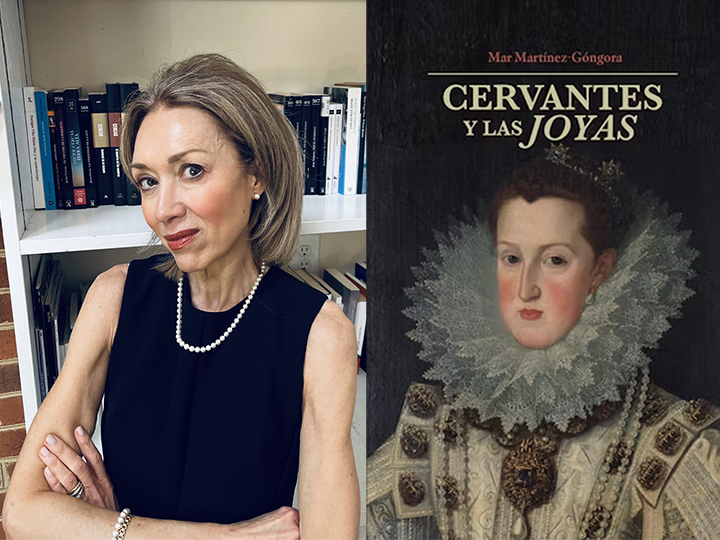Cervantes y Las Joyas

Date: Monday, Mar 30, 2026
Start time: 12:00 PM
End time: 1:00 PM
Location: Online via Zoom
Audience: Open to all
Cervantes y las joyas examines the image of jewels in the poetry and narrative works of Miguel de Cervantes. Drawing from a multidisciplinary methodology that integrates literary, historical, and philological analysis, as well as theoretical concepts from gender studies and material culture, I analyze the complex range of meanings associated with jewels and precious stones in Cervantes's poetry and novels, particularly Don Quijote, Exemplary Novels, and The Trials of Persiles and Sigismunda. This study investigates a variety of textual and visual sources, including Humanist discourses on women, sumptuary laws, geographic descriptions, and Renaissance and Baroque court portraits of historical queens.
In Cervantes’s texts, gems and jewels function as polysemic symbols, integral not only to the construction of the iconographic image of historical queens but also as markers of the special alliances formed between powerful women and women of inferior status, to whom they offer assistance and promotion. Jewels thus emerge as multifaceted symbols, denoting the formation of feminine networks of solidarity that transcend class boundaries, while simultaneously reinforcing those boundaries in order to highlight the impact of social difference on the construction of female subjectivity.
Also, the valuable ornaments worn by women—whether Muslim or Christian, dressed in Moorish attire—are described in such a way that they render their wearers objects of both sexual and colonial desire under the male gaze, while also signaling the challenges of categorizing ethno-religious identities in the Iberian Peninsula and the Mediterranean world.
Finally, the male appropriation of jewels, driven by their high market value, although presented as a demonstration of patriarchal power, reveals the anxieties of a male subject in the presence of a powerful woman. Through the depiction of men wearing jewelry, Cervantes critiques the corruption of male characters and anticipates Baroque-era lamentations about the crisis of masculinity, which reflect the economic decline and political decay of the nation.
About the Speaker
Mar Gongóra Davis, Ph.D is a Professor of Spanish and Iberian Studies at Virginia Commonwealth University. She investigates Early Modern literature and culture with a focus on the construction of ethnic otherness and gender difference, rural and urban spaces, as well as material culture in the context of Imperial politics. She is also interested in the Contemporary novel. She has published five books, the most recent, Cervantes y las joyas, and numerous articles in peer reviewed journals. Her article “Sobre héroes y monstruos: la decoración escultórica del castillo de Vélez Blanco y la literatura de su tiempo.” La Corónica 46.1 (2018): 41-71 was awarded with the John K. Walsh award for best article in volume 46 of La Corónica.
Event contact: Ellie Musgrave, musgraveec@vcu.edu